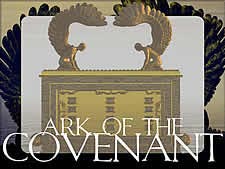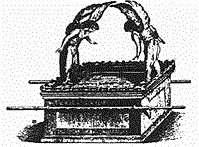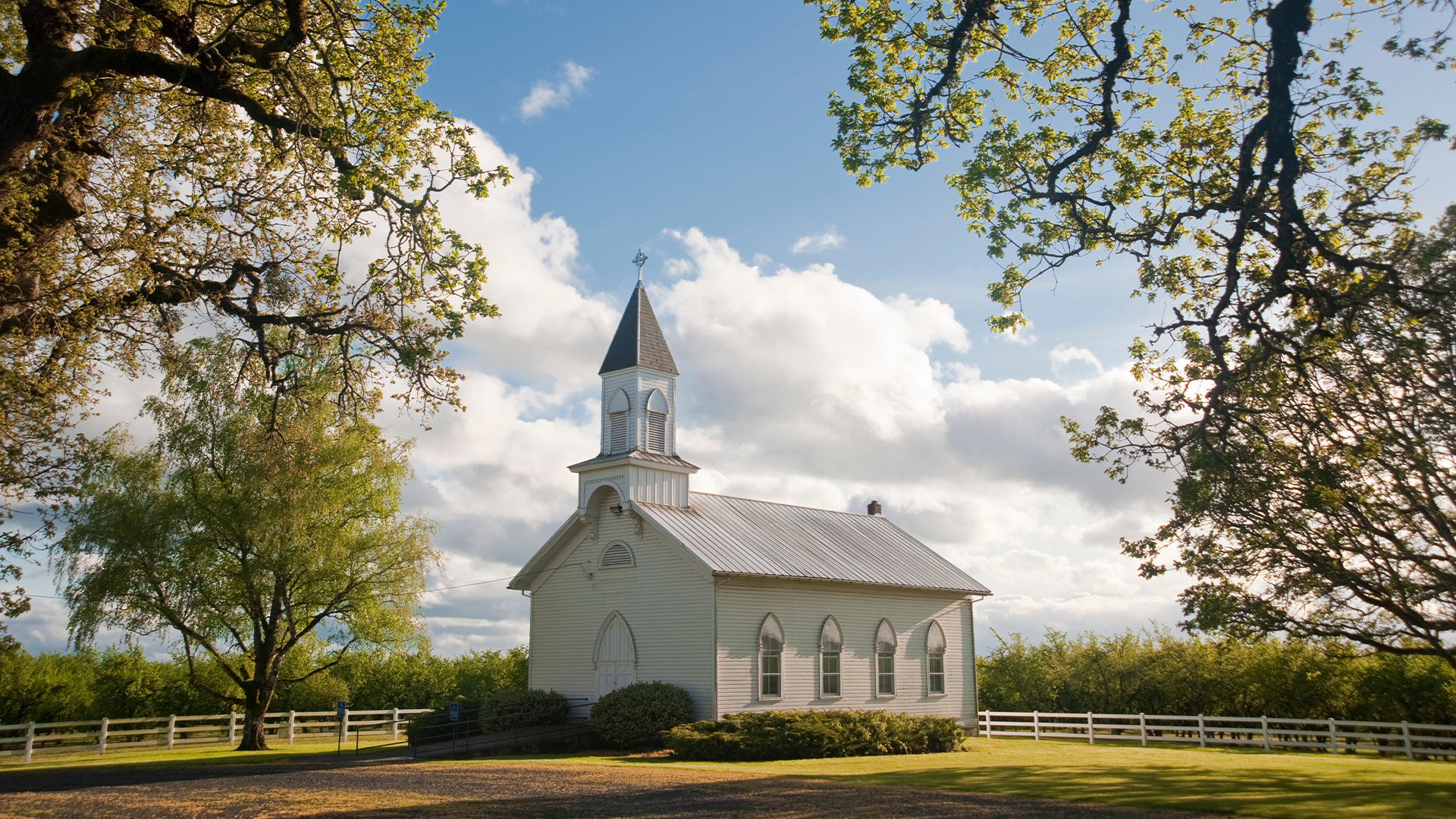The Search for the Ark of the Covenant
Will the Ark of the Covenant be found?

It was in the mid-eighties, and I was hosting a pilgrimage group on a tour of the Holy Land. We had made the long drive from the Sea of Galilee to Jerusalem and had arrived in “the city of the Great King” exhausted.
It seemed like I had hardly gone to sleep when I was jolted awake by the telephone. Assuming it was my wake up call, I lifted the receiver and mumbled, “Thank you.”
I was surprised to hear a familiar voice on the other end. “Hello, David, I’m calling from Texas!”
“From Texas!” I replied. “All the way from Texas?”
“Yep,” answered my friend, “and guess what? They’ve found the ark!”
“The what?”
“The ark!”
“Noah’s?”
“No, dummy, the Ark of the Covenant.”
Needless to say, that statement really woke me up.
A Startling Discovery
My friend proceeded to explain that he had just read in the Dallas Morning News about the discovery of the lost Ark of the Covenant. It had supposedly been found on Mount Pisgah (Mt. Nebo) in Jordan by a religious group from Kansas.
It all sounded a little far out to me. I suspected that someone had lost touch with reality after having seen the popular movie, Raiders of the Lost Ark.
Nonetheless, I rushed down to the hotel lobby to get the latest copy of The Jerusalem Post. Sure enough, there on the first page was the story. The writer evidently shared my skepticism because the headline read: “Thar’s an Ark in Them Thar Hills!”
A Suspect Discovery
The story was right out of Alice in Wonderland. Some end-time sect from Winfield, Kansas, calling itself the Institute for Restoring Ancient History International, had issued a statement claiming to have discovered the Ark in a sealed passageway inside Mt. Pisgah.
They offered no evidence, even though they claimed to have taken photographs. They also refused to reveal the exact location of their find.
The leader of the group, who had a reputation for being anti-Semitic, said he was going to prove his good will toward the Jews by turning all his evidence over to David Rothschild.
When asked why he had selected Rothschild, he replied that he considered Rothschild to be the leader of the Jews (an old anti-Semitic attitude!). He also explained that he felt Rothschild had the power to help his group in dealing with the Jordanian government and the Vatican.
A Provocative Discovery
The headlines have since subsided. The Kansas group has returned to its anonymity in the wheat fields. And the movie, Raiders of the Lost Ark, is considered a fictional classic.
But the incident and movie motivated a lot of questions, some of which relate to end time events. What was the Ark of the Covenant? Why was it so important to the Jews? What happened to it? Will it be found again? Is it essential for the rebuilding of the Jewish temple?

The Bible and the Ark
The origin of the Ark is to be found in Exodus 25:10-22. God ordered the Ark to be built to house the tablets of stone on which He had written the ten commandments. The Ark was a box approximately four feet long, two feet wide, and two feet high. It was made of acacia wood and was overlaid with gold inside and out.
The lid that covered the box was called the “mercy seat.” It was made of pure gold. Two gold cherubim were mounted on the lid, one on each end. The cherubim faced each other, and their wings were spread out toward each other, overshadowing the mercy seat.
According to Hebrews 9:4, two other items were later added to the contents of the Ark. One of these was a pot of manna, the miraculous food that God supplied the children of Israel in the wilderness (Exodus 16). The other item was Aaron’s rod that budded (Numbers 17).
The Ark was housed in the Holy of Holies, the innermost chamber of the Tabernacle of Moses. Once a year, on the Day of Atonement, the High Priest entered that Holy of Holies and sprinkled blood on the mercy seat to atone for his sins and the sins of the nation of Israel (Leviticus 16 and Hebrews 9). Because God had promised Moses that He would commune with Israel “from above the mercy seat” (Exodus 25:22), the concept developed that the Lord of Hosts was enthroned on the cherubim of the Ark (see 1 Samuel 4:4 and Isaiah 37: 16).
The Symbolism of the Ark
Much has been made of the symbolism of the Ark, and rightfully so. Suffice it to say that every aspect of the Ark pointed to Jesus.
The acacia wood symbolized our Lord’s humanity. The gold overlay denoted His deity. The Law inside the Ark pictured Jesus with the Law of God in His heart, living in perfect obedience to it. The pot of manna spoke of Jesus as the Bread of Life or our life sustainer. Aaron’s rod that budded obviously prophesied the resurrection.
The mercy seat was also a symbol that pointed to the Messiah. It was representative of the fact that the work of Jesus on the Cross would cover the Law of God with His mercy. It is an illustration of how the divine throne was transformed from a throne of judgment into a throne of grace by the atoning blood that was sprinkled on it.
The Ark’s Pilgrimage
As the children of Israel wandered in the wilderness for 40 years, the Ark was carried before them on golden poles by the priests, following “the cloud of the Lord” in order “to seek out a resting place for them” (Numbers 10:33). The Ark was carried into Canaan when the Israelites crossed the Jordan, and it was instrumental in their victory over Jericho (Joshua 6). During the 400 year period of the Judges, the Ark was housed in the Holy of Holies at the Tabernacle that was erected at the religious center of Shiloh (1 Samuel 1:3, 3:3).
During the latter part of the period of the Judges, when apostasy was rampant in Israel, the decision was made to carry the Ark into a battle against the Philistines as a good luck charm (1 Samuel 4:1-4). This desecration of the sacred Ark enraged the Lord, and He allowed the Philistines to win the battle and capture the Ark (1 Samuel 4:5-11).
But the Ark proved to be a hot box for the Philistines. When all sorts of calamities began to afflict them, they decided to return the Ark (1 Samuel 5 and 6).
It was first taken to a small village called Bethshemesh which was located on the border between Philistia and Judah. When the people of that town ventured out of curiosity to look inside the Ark, a great number were struck dead (1 Samuel 6:19-21). They quickly decided to pass the Ark on to the village of Kiriath-jearim, located just a few miles northwest of Jerusalem (1 Samuel 7:1-2). It remained there for almost 70 years in the house of Abinadab. (The 70 years were the last 20 years of Samuel’s judgeship, the 40 years of Saul’s kingship, and the first seven years of David’s reign in Hebron, before he moved to Jerusalem).
When David arrived in Jerusalem, the first priority of his administration was to provide the Ark a proper resting place because He was anxious to bring the symbol of the presence of God back into the life of the nation (Psalm 132:1-5). The Ark’s return was an occasion for great rejoicing (1 Chronicles 15). David placed it in a tent on Mt. Moriah where it remained until his son Solomon built the Temple. The Holy of Holies in that Temple became the final resting place of the Ark (1 Kings 8 and 2 Chronicles 5).
The Lost Ark
No one knows for sure what happened to the Ark. The last time it is mentioned in Scripture is in 2 Chronicles 35:3. That passage makes it clear that the Ark was still in existence at the time of the spiritual revival led by the boy king, Josiah. Within 22 years after Josiah died, Judah fell to the Babylonians (586 B.C.), and the Ark disappeared.
Some scholars believe it was simply destroyed when the Temple was burned. Others believe it was captured as a prize of war, taken to Babylon, and probably melted down for its gold.
But the strongest tradition is that it was taken out of the Temple by Jeremiah and hidden. Some are convinced he hid it in the ground on the Temple Mount. But most who hold to the Jeremiah rescue theory believe he either hid the Ark in a great cavern beneath the Temple Mount (known today as Solomon’s Quarry) or that he hid it somewhere near Mt. Nebo in the modern day nation of Jordan.
The latter theory finds support in the apocryphal book of 2 Maccabees. The narrative in that book says, “the prophet, warned by an oracle, gave orders for the tabernacle and the ark to go with him when he set out for the mountain which Moses had climbed to survey God’s heritage. On his arrival, Jeremiah found a cave-dwelling, into which he brought the tabernacle, the ark, and the altar of incense, afterwards blocking up the entrance” (2 Maccabees 2:4-5).
Another theory regarding the fate of the Ark is that it was translated or raptured, being taken up to Heaven to prevent it from falling into the hands of the Chaldeans. This theory is based upon a reference to the Ark in Revelation 11:19. This passage is a flash-forward to the end of the Tribulation when Heaven opens and Jesus returns in wrath. The writer states that when Heaven opened “the ark of His covenant appeared in His temple.” Those who reject this theory argue that the Ark seen in Heaven in this passage is the heavenly reality of which the Ark of the Covenant was only an earthly shadow or copy (Hebrews 8:5).
The Forgotten Ark
Regardless of what happened to the Ark, the Scriptures suggest that it will never be found again. This comes as quite a shock to some Christians who have assumed that the Ark must be found before the Tribulation Temple can be built and animal sacrifice reinstituted. Others have simply assumed that the Ark would be replaced in the Holy of Holies when the Lord’s Millennial Temple is built.
But Jeremiah says point blank that “the ark of the covenant of the Lord… shall not come to mind, nor shall they remember it, nor shall they miss it, nor shall it be made again” (Jeremiah 3:16). The context of this passage is the Millennial reign of Jesus, so it does not rule out the possibility of a discovery prior to that time. Conceivably, the Ark could be discovered, and Satan could use its discovery to incite the rebuilding of a Temple where an apostate sacrificial system would be reinstituted. We know that such a Temple will be built, but I doubt if its construction will be motivated by the discovery of the Ark.
The important point to keep in mind here is that the rediscovery of the Ark is not essential to the rebuilding of the Temple. After all, the Temple was rebuilt by Zerubbabel following the Babylonian captivity, and the Ark had already been lost by that time. There was no Ark in the Holy of Holies during the time when Jesus worshiped in the Temple.
Nor is the Ark needed for the Millennial Temple. Ezekiel describes the Temple in great detail (chapters 40-42), and he never mentions the Ark. There is a Holy of Holies (Ezekiel 41:4), but it is empty, and it is not separated from the Holy Place by a veil.
Jesus has already entered the heavenly Holy of Holies in our behalf (Hebrews 4:14-16, 8:1-6). He has torn away the veil that separated us from God, and He serves as our High Priest, having offered His own blood as the perfect sacrifice for our sins (Hebrews 9:11-16). He serves as our Mediator before the Father’s throne (Hebrews 9:24-28).
Thus, during the Millennium, there will be no need for a human high priest or an Ark with a mercy seat. Jesus will continue to function as mankind’s High Priest, just as He will continue to serve as humanity’s Mercy Seat (Haggai 2:20-23).
The True Ark
With regard to this concept of Christ as our mercy seat, let me add a penetrating insight which I picked up from John MacArthur, one of this country’s greatest preachers. He pointed to a simple historical verse that contains a profound truth about Jesus being our mercy seat.
The verse is John 20:12. Speaking of Mary looking into the empty tomb of Jesus, the verse says, “she beheld two angels in white sitting, one at the head, and one at the feet, where the body of Jesus had been lying.” What Mary saw, MacArthur observed, was the new mercy seat, the perfect mercy seat.
Consider again what Mary saw. She witnessed two angels sitting at each end of the slab which had held the broken body of our Lord. That scene points us back to the Ark of the Covenant where two cherubim hovered over its blood splattered mercy seat!
There is no more need for the Ark. Jesus has fulfilled all that the Ark stood for. He was deity who took on flesh. He rendered complete obedience to the Law, being made perfect and becoming the source of our salvation (Hebrews 5:8-9). His blood was shed for our sins, and His victory is attested by the fact and the power of His resurrection.
Just as the Ark was designed to be a symbol of the presence of God in the midst of His people, Jesus is the ultimate expression of God’s love and care and presence. He is our Ark. He is our Law. He is our Manna. He is our Budded Rod. And, thank God, He is our Mercy Seat.
The Ark’s Fate
A geographic location that has become a focal point of debate among Bible prophecy experts is the location of the Ark of the Covenant.
The Ark was lost when Solomon’s Temple was destroyed in 587 BC. Was the Ark also destroyed, or was it hidden away somewhere? And if it was hidden, where might it be?
A book by Randall Price has helped to sharpen the debate concerning the fate of the Ark. It is entitled In Search of Temple Treasures (Harvest House 1994). Price is a fine scholar and an excellent communicator. Unlike others who have written on the issue, he avoids sensationalism and fanciful speculation.
His opening pages present an excellent capsule summary of the origin, purpose and history of the Ark. He points out that the last mention of the Ark in the Bible is to be found in 2 Chronicles 35:3, during the time of King Josiah (about 25 years before the Temple was destroyed).
One of the best parts of the book is the author’s survey of the various theories concerning the Ark’s fate. He takes a look at claims that the Ark might have been destroyed on five different occasions, and he gives good reasons for dismissing all of these. He then considers 12 different locations where people have speculated the Ark might have been hidden. These include — believe it or not — the Irish isles, the Vatican, a church in Ethiopia, Mt. Nebo in Jordan, and a great variety of locations within Israel.
Without absolutely declaring that he knows where the Ark is located, Price nonetheless concludes that Jewish traditions, both written and oral, are the most reliable indicator. Those traditions point to a secret compartment under the Temple Mount.
This theory cannot be proved at the moment because the Israelis have allowed Islamic authorities to control the Temple Mount ever since Israel reconquered it in 1967. These authorities will not permit any archeological excavations on the Mount — both because they consider it a holy place and because they do not want any evidence unearthed that would prove the Mount was the site of the Jewish Temple.
Price tells a fascinating story about two Jewish rabbis who decided to tunnel under the Mount to find the secret hiding place of the Ark. They began their quest in 1981, and it was brought to a sudden halt that same year when the Muslims discovered their digging. The entrance to the tunnel was sealed, and the Jewish tradition regarding the Ark’s location remains unsubstantiated.
Price devotes an entire chapter to a third possible fate of the Ark (in addition to destruction and hiding). It is the fate that I personally believe to be the most likely — namely, that the Ark was raptured to Heaven before the destruction of Solomon’s Temple.
I hold this view because the Apostle John states that he saw the Ark in Heaven (Revelation 11:19). Price argues that the Ark John saw was the heavenly model of the earthly version, and he points to Exodus 25 where Moses was told to construct the Ark according to the Lord’s “pattern.” But a pattern does not have to be a model. It can be a blueprint or an oral description.
Personally, I cannot imagine the Lord allowing anyone to destroy the Ark which was the symbol of His presence. And if the Ark was hidden in a secret chamber under the Temple Mount, why didn’t the Jews simply bring it out of the chamber and put it in the Holy of Holies after they returned from Babylonian captivity? Why did they leave the Holy of Holies empty throughout the history of the Second Temple?
And why would the Lord allow the Jews to find the Ark today? Price indicates that its discovery may well prove to be the catalyst that will prompt the Jews to build the Third Temple. There is no doubt such a Temple will be built, but keep in mind that it will be an apostate Temple. Would God allow His holy Ark to be found and placed in such a Temple? I think not.
Let me emphasize this point. It is not God’s perfect will that a Third Temple be built. He will allow it to be built in His permissive will, but His perfect will for Israel is for them to accept Jesus as their Messiah — and not for them to return to the Mosaic sacrificial system that was nullified by the Cross.
The only disappointing thing about Price’s book was something he tried to do in the closing chapters. Incredibly, he tries to argue that Jeremiah 3:16 means exactly the opposite of what it says! This verse states categorically that during the Millennium the Ark “will not be remembered or missed or made again.” Price argues that this statement is so strong that it must be hyperbole, and therefore it must mean the opposite of what it says. Such spiritualization of Scripture by a premillennial author is astounding and is enough to make an amillennialist blush!
The fact of the matter is that the Bible makes it very clear in this verse and in Exodus 40-48 that there will be no Ark of the Covenant in the Millennial Temple. The reason, of course, is that Jesus has fulfilled all the Ark’s prophetic implications. Jesus is our Ark of safety, peace, and redemption. We have no need for any other Ark.
Although I do not agree with the conclusions of this book, I recommend it to you. It will provoke you to think and to search the Scriptures — two exercises that we need much more of in the Church today.




